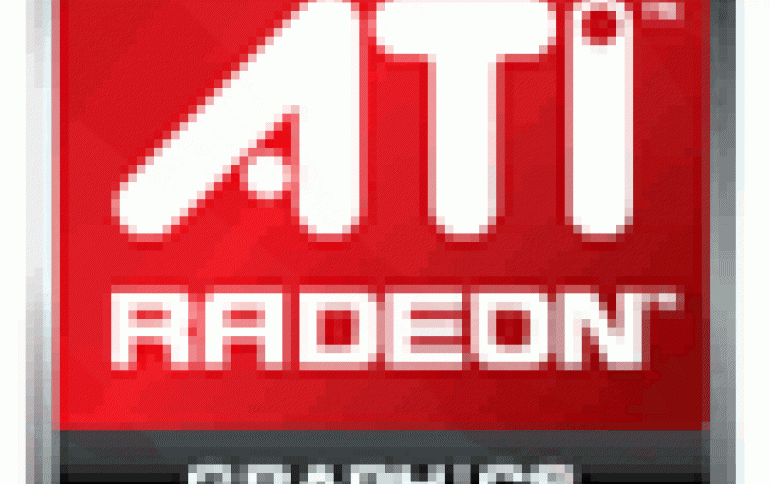
ATI Cayman GPU Comes With New Architecture
AMD's upcoming "Cayman" graphics processor will feature a new DirectX 11 architecture as well as other performance enhancements, according to some new presentaion slides.
AMD's new family of chips known as AMD Radeon HD 6900 are expected to be released next month. According to official slides
posted online at the NGOHQ website, the Radeon HD 6900 will feature dual graphics engines, a new VLIW4 core architecture, mode SIMD engines and texture units, upgraded render back-ends, a 256-bit GDDR5 memory interface (over 5Gbps) as well as new GPU compute features.
The GPU compute enhancements include asynchronous displace, which mean that multiple compute kernels will be executed simpultaneously. Each kernel has its own command queue and protected virtual address domain. In addition, dual bidirectional DMA engines are available for faster system menory reads and writes. Other GPU enhancements include an improved flow control and faster double precision ops (1/4 SP rate).
Each of the two graphics engines has two rasterizers, two geometry assemblers, two vertex assemblers and two tessellators with off-chip buffer support. The 8th gen tessellation units will offer a 3x tesselation performance vs. the ATI Radeon HD5870 graphics card, according to AMD. Dual rasterizers per graphics engine will also be able to process up to 32 pixels per clock.
The new new VLIW4 core architecture allow better utilization than AMD's previous VLIW5 design. This is translated to a similar performance with ~10% area reduction, a simplified scheduling and register management as well as extensive logic re-use.
Another basic feature of the AMD Radeon HD 6900 series is a new power management engine. This clamps the GPU TDP to a pre-determined level. An integrated power control processor monitors the power draw every cycle and dynanically adjusts closk for various blocks to enforce TDP. The feature provides direct control over GPU power draw (as oposed to indirect via clock/voltage tweaks). Users will be able to controll the power containment feature via the AMD Overdrive utility.
Other improvements include support of higher-quality antialiasing.
The slides do not reveal much about the specifications of the AMD Radeon HD 6900. For sure, the Cayman features more than 20 SIMD engines with 16 stream cores. The chip will also have more than 1600 stream processors, over 80 texture units, 32 color ROPs and a 256-bit memory bus.

All these should be translated to a 30% - 50% higher performance for the Radeon HD 6970 against the Radeon HD 6870.
The GPU compute enhancements include asynchronous displace, which mean that multiple compute kernels will be executed simpultaneously. Each kernel has its own command queue and protected virtual address domain. In addition, dual bidirectional DMA engines are available for faster system menory reads and writes. Other GPU enhancements include an improved flow control and faster double precision ops (1/4 SP rate).
Each of the two graphics engines has two rasterizers, two geometry assemblers, two vertex assemblers and two tessellators with off-chip buffer support. The 8th gen tessellation units will offer a 3x tesselation performance vs. the ATI Radeon HD5870 graphics card, according to AMD. Dual rasterizers per graphics engine will also be able to process up to 32 pixels per clock.
The new new VLIW4 core architecture allow better utilization than AMD's previous VLIW5 design. This is translated to a similar performance with ~10% area reduction, a simplified scheduling and register management as well as extensive logic re-use.
Another basic feature of the AMD Radeon HD 6900 series is a new power management engine. This clamps the GPU TDP to a pre-determined level. An integrated power control processor monitors the power draw every cycle and dynanically adjusts closk for various blocks to enforce TDP. The feature provides direct control over GPU power draw (as oposed to indirect via clock/voltage tweaks). Users will be able to controll the power containment feature via the AMD Overdrive utility.
Other improvements include support of higher-quality antialiasing.
The slides do not reveal much about the specifications of the AMD Radeon HD 6900. For sure, the Cayman features more than 20 SIMD engines with 16 stream cores. The chip will also have more than 1600 stream processors, over 80 texture units, 32 color ROPs and a 256-bit memory bus.

All these should be translated to a 30% - 50% higher performance for the Radeon HD 6970 against the Radeon HD 6870.




















